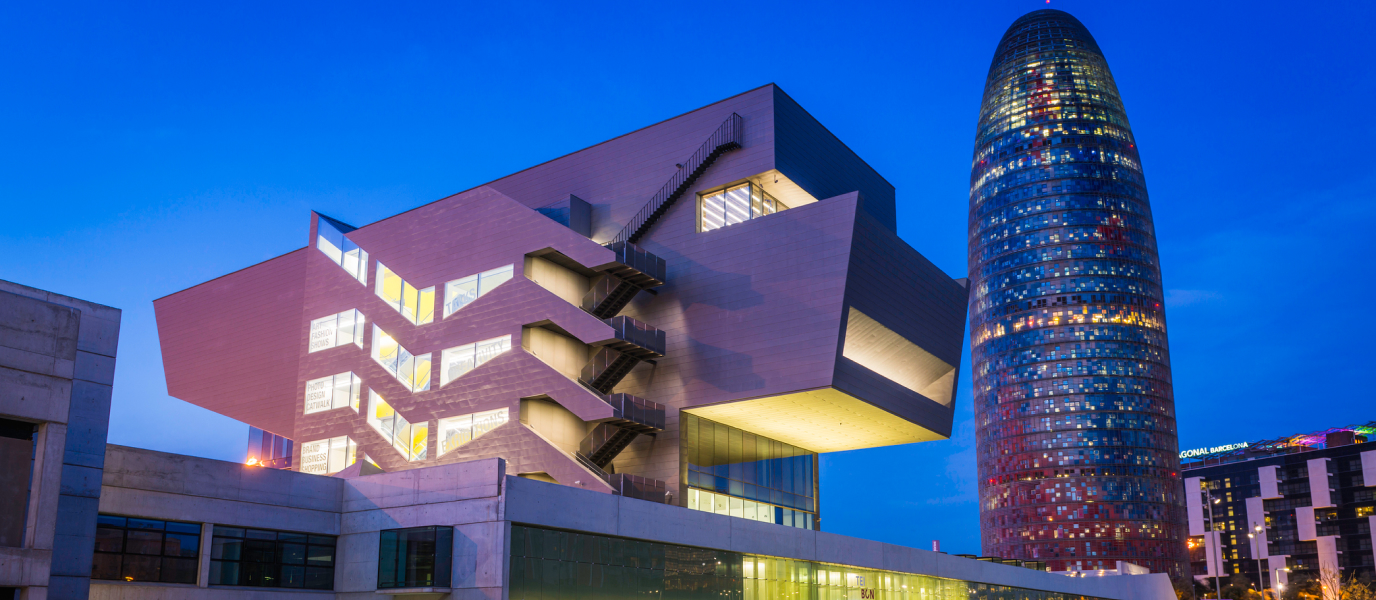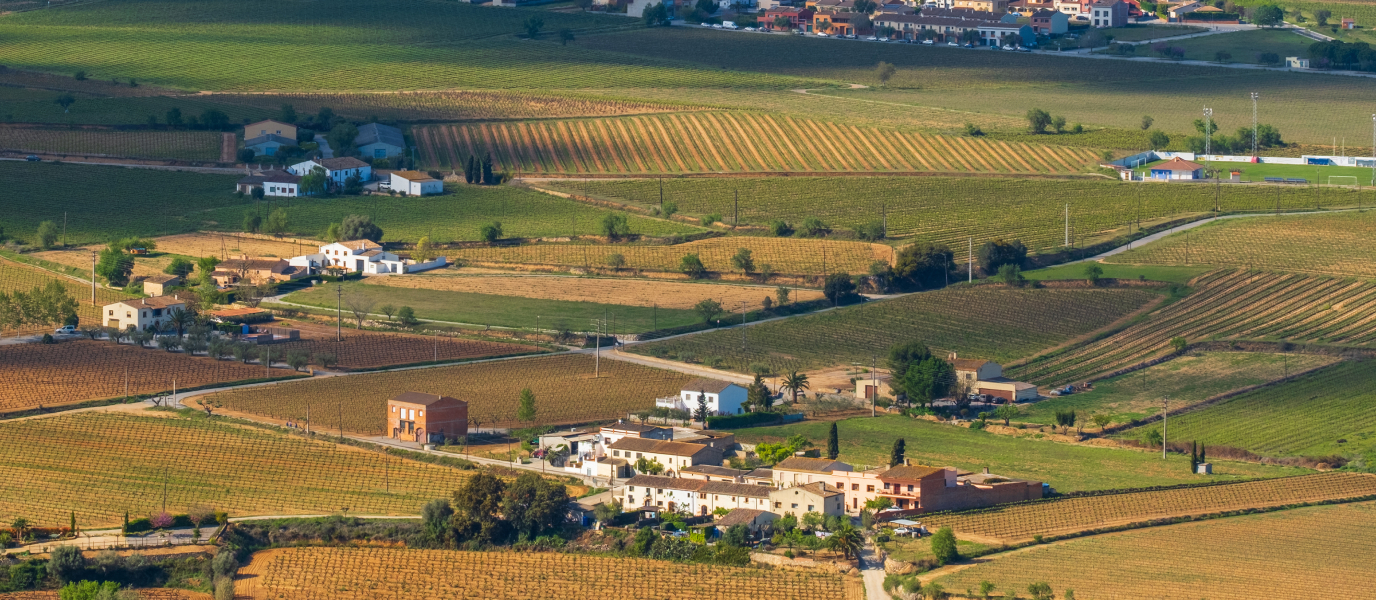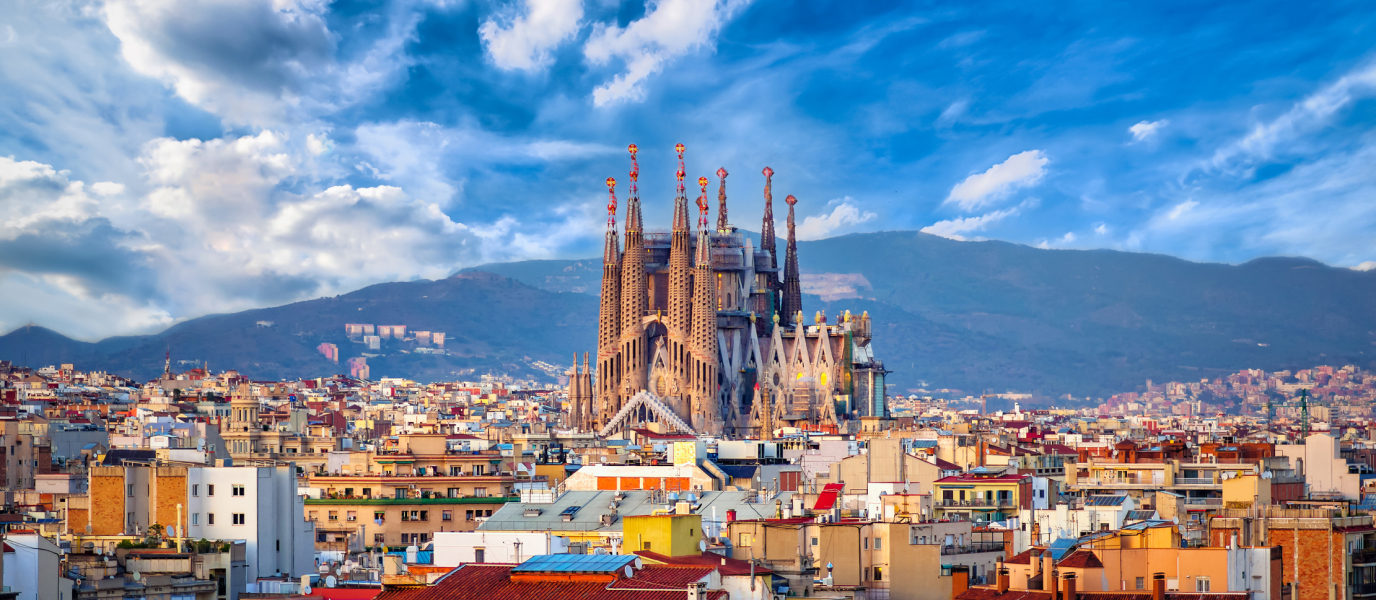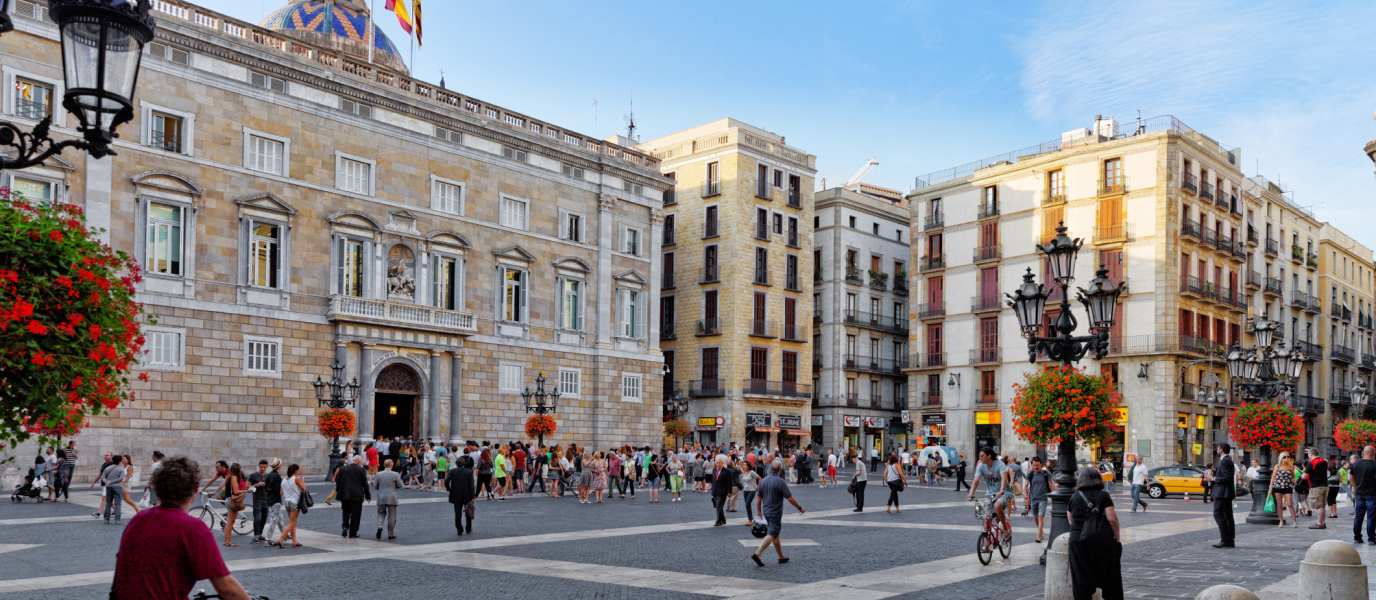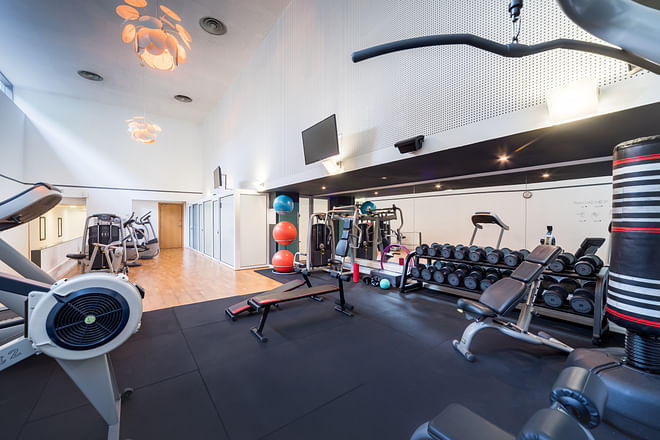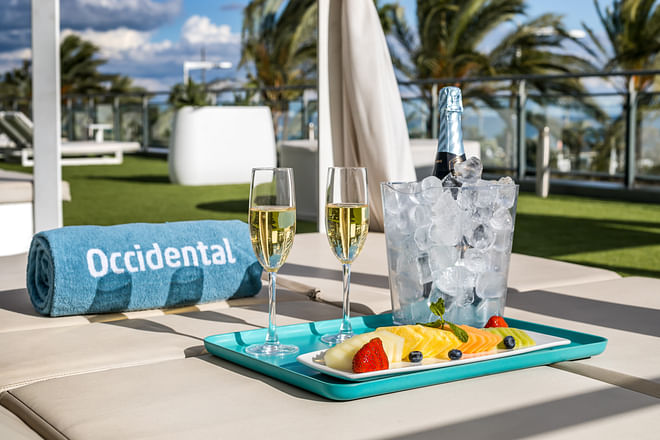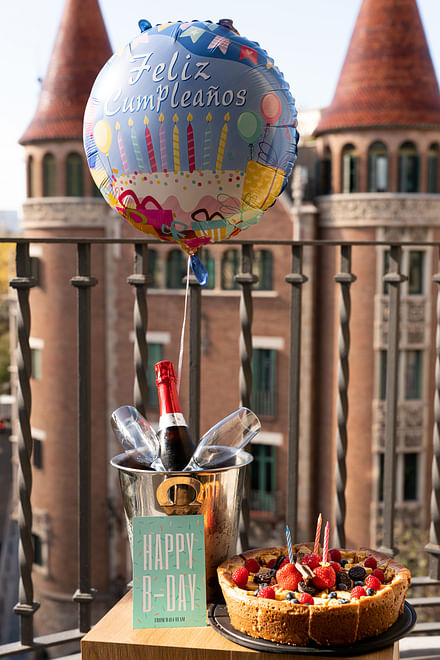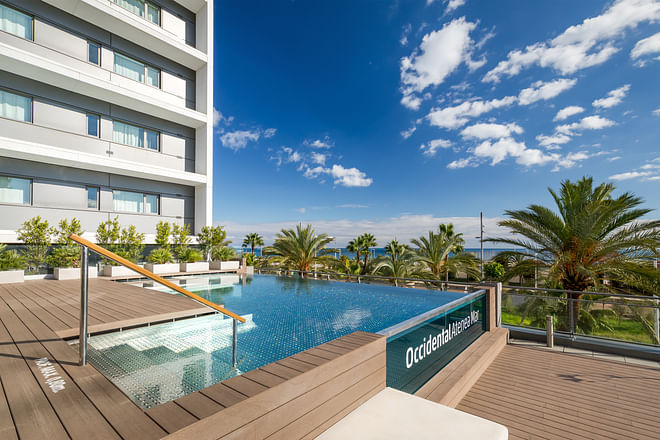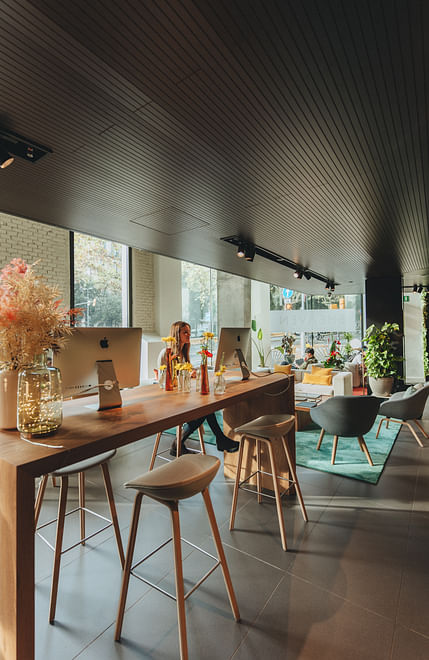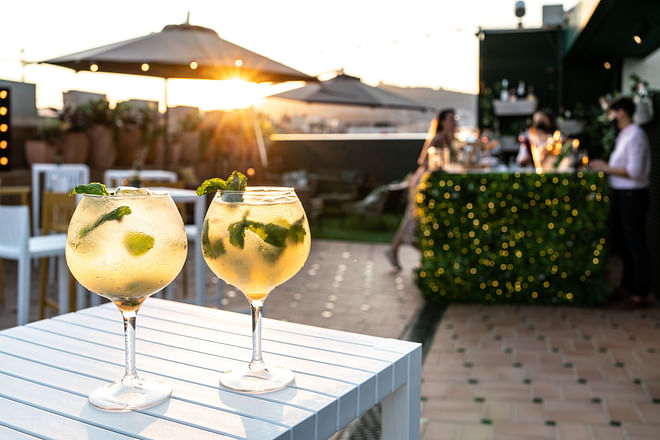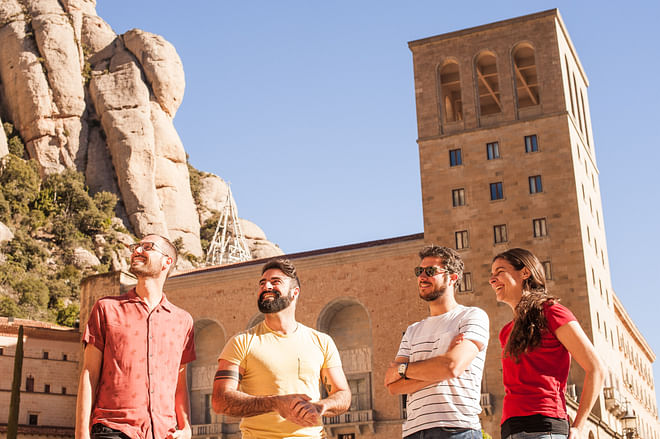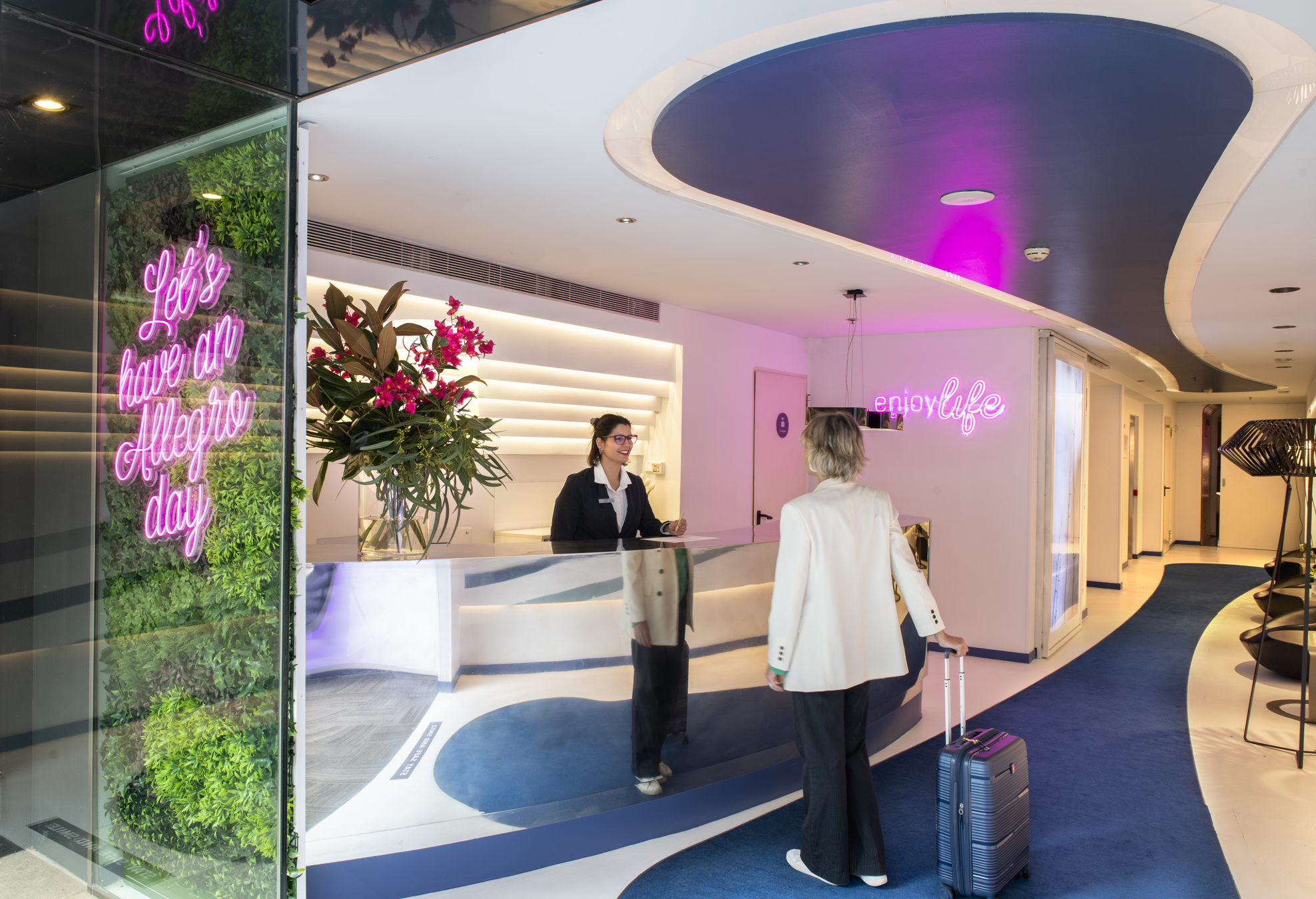On Avinguda Diagonal 211, and close to the Plaça de les Glòries, stands a skyscraper, 145 metres and 34 storeys high, that has become a symbol for the new Barcelona. Opened in 2005, Torre Agbar (or to give it its official name, Torre Glòries) designed by the French architect Jean Nouvel, ruffled a few feathers in the beginning thanks to its unique appearance: it is shaped like a bullet or a cucumber—but with the passage of time, it has established itself as part of the Barcelona skyline. Perhaps because, with its curved lines and oval shape, it aspires to enter into a silent dialogue with Gaudí’s Sagrada Familia and the mountain of Montserrat—while at the same time representing the idea of a new, modern, technologically pioneering and sustainable Barcelona. Its location places Torre Agbar [Agbar Tower] at the gateway to the 22@ technological district, which has transformed 200 hectares of the former industrial area of Poblenou into Barcelona’s version of Silicon Valley.
A ‘green’ building that is illuminated at night
Torre Agbar is considered as an example of bioclimatic architecture, and in 2011 it was awarded Green Building status by the European Commission, thanks to its energy efficiency and its low level of CO2 emissions. One of the keys to its low level of energy consumption is the use of lightweight materials that take advantage of Barcelona’s Mediterranean climate. The tower is clad in 60,000 aluminium and glass slats which incorporate photovoltaic plates; these store enough solar energy to make the whole building self-sufficient. In addition, both the heating and the interior lighting are regulated by a smart computerised system that prevents unoccupied areas of the building receiving heat and light.
During the daytime, the play of different colours, the refractions and degrees of transparency of the aluminium slats as they reflect the sun’s rays create beautiful chromatic scales that change according to the time of day, or even the season of the year. At night, 4,500 LED devices illuminate the tower with beautiful colour shifts of up to 16 million shades, graduating from warm shades at the base to cold tones higher up.
Spectacular from the outside, jinxed on the inside
In spite of its dazzling appearance, Torre Agbar has been less successful in terms of its functionality. It opened in 2005 as the corporate head office of Grupo Agbar, and offered office space for rent, but high costs and the impractical facilities eventually drove out all the companies, including Agbar itself. The situation was not helped, either, by cases of lipoatrophia semicircularis (otherwise known as Sick Building Syndrome) being diagnosed among workers. Over the following years, projects emerged in an effort to find a new use for the building (including a luxury hotel, and a potential head office for the European Medicines Agency)… but they all came to nothing. Eventually, in 2018, Torre Agbar regained its fame and prestige when the Competence Call Center company moved in, subcontracted by Facebook to run its control centre to combat ‘fake news’.
An interesting fact: Torre Agbar has twice been in the news when it was scaled without a safety harness by Alain Robert, known as the French Spiderman. The first time he performed this daring feat was in the spring of 2006, when he declared it was “an act in favour of peace in Lebanon”. During the course of his career, this expert has scaled other iconic buildings including the Golden Gate of San Francisco, Dubai’s Burj Khalifa, the Eiffel Tower and the Sydney Opera House.






























































